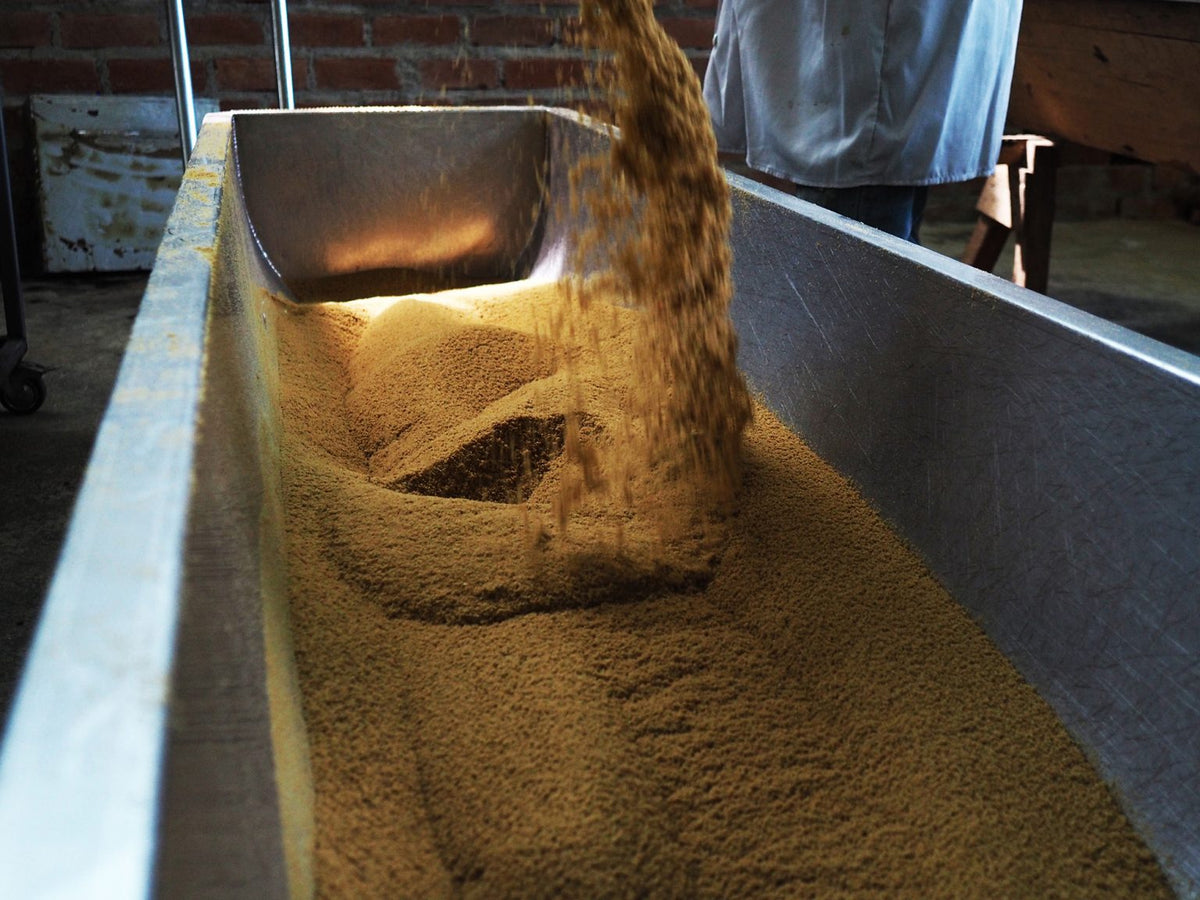Meet our panela producers

Discover the production process of this ecological sugar, a whole cane sugar (therefore raw, unrefined), organic and fair trade.
What is panela?
Where is panela produced?
How is panela produced?
Step 1

The sugarcane is passed through a machine that compresses it. This extracts the juice, which is a mixture of water and sugar.

Through the gray pipe (see photo), the juice enters the building and falls into a container with sieves to purify the sugar cane water.
Step 2

The liquid falls from the black pipe into a large cauldron. The clarification process begins: the sugarcane juice begins to heat up.

To fuel the fire, producers use dried sugarcane, from which the juice has been extracted. It is difficult for them to control the boiling temperature because it depends on the combustion of the sugarcane. It is a very artisanal process.

A foam of impurities forms. It is removed through the sieve. Farmers harvest the foam to water their fields: nothing is wasted!
Step 3

The boiling process can begin. The juice falls into a second pot. Steam escapes as the sugarcane juice is boiled to evaporate the water and thus keep the juice pure and concentrated (a bit like making maple syrup).
Step 4

The water has evaporated and the juice is then transferred to a third pot. It is brought to a higher boil. The temperature is easier to control because the pot is closer to the wall. Using a very large spoon, the farmers lift the juice into the air and stir it to leave a very thin crust (like taffy). It will break on its own when touched.
Step 5

The panela is then placed in a final, unheated pot. The very hot panela then begins to swell, similar to boiling milk. With a shovel, the farmers break this layer when it reaches the top of the container to allow the panela to be cooled by the air.
Step 6

The panela cheese is still very moist, but it is beginning to form granules. The more it cools, the more it dries out with the air.

The producers mix everything together until they obtain a fine panela texture like the one we eat!
